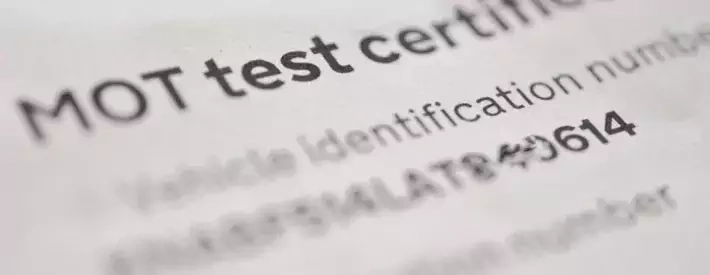Getting behind the undertray challenge

In this article: Making sure vehicles are fully tested wherever possible is crucial for customers and testers alike, so even if some parts are obscured by an undertray it isn’t a free pass, MOT guru Paul Charlwood explains why
Recently I was running an audit at a professional MOT station and found from the test histories they had started advising “Undertray fitted obscuring some underside components” on nearly every vehicle. But is this just an excuse to not test certain elements even if they are partially visible?
DVSA have given advice on this in the past, but perhaps never fully. In “Matters of Testing” it states: “…consider whether it’s necessary to select items from the non-component advisory list such as “undertrays fitted obscuring some underside components” where they are known to be standard fitment on the model of vehicle tested.”
Advisories are often added for the benefit of the customer and subsequent vehicle owners, but as the buck stops with testers, we also write them for our benefit too, in case the vehicle is subject to an appeal.
So, is the advisory a safety net? Maybe not, after all, many brake pads are difficult to see but we take great care to view them as far as we can. Few testers add advisories such as “wheel trims fitted, obscuring testable components”. More likely is that we’ll use a torch to assess them.
But it’s all too easy to breeze past the undertray without taking a peek passed it. Don’t think “Ah! It’s got an undertray, I am relieved of the responsibility of testing anything behind it.” Like the brake pad, what can be seen can be tested.
If a vehicle rolls into my workshop with an undertray fitted, the first thing I’ll do is ask a simple question: Can I see testable components behind the tray?
If there is I test the item as far as I can, so, if a brake pipe is visible, and clearly corroded to the point of failure I fail it. If I can’t get close enough to the corroded pipe to assess it, for example I need to scrape it with the Corrosion Assessment Tool, then I will advise it; OSF steel pipe, two-way union to flexible hose, some corrosion.” Now I will add an advisory for the undertray. I won’t get tempted to do a sub-standard test by relying on the undertray as a get out of jail free card.
Why? Because it wont work. If the testable item is clearly visible in spite of the undertray, then DVSA will rightly expect me to test it. Appeals usually centre around a reinspection of the vehicle, an interview and photographs of any missed defects. Generally, if the defect can be photographed, it can be seen with the eye.
If I get an old car that has a recently fitted undertray with new fasteners – then it’s probably unfair to advise it. After all, its not exactly a peculiarity or a defect. I will probably record the fact the under tray has been recently worked on in my records such as the VT40. That way, I have evidence for DVSA that at the time I tested the vehicle it was fitted. I won’t be casting a stain on the vehicle’s MOT history for a feature it was made with.
I remember an old VW type II being offered as a “trade in” years ago to a camper van specialist I worked for. It had a recent sheet of steel tack welded over the whole rear chassis area. Not surprisingly, we politely declined to buy it. If it was presented to me for a test then it would, indeed be a peculiarity and probably hiding a seriously corroded chassis and underside. I would definitely advise that!




